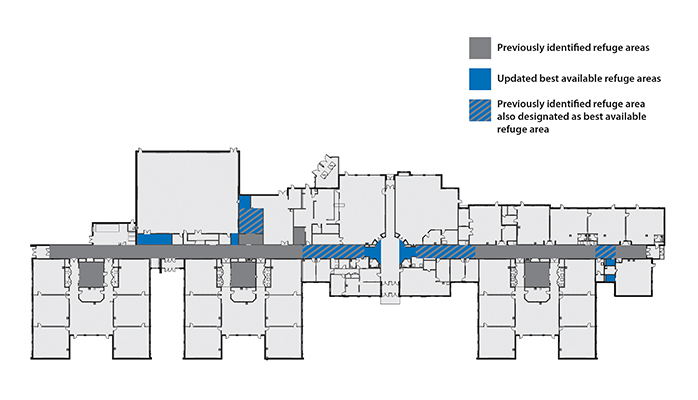
Most schools in tornado prone regions already have identified refuge areas. These designated areas have often not been selected by a qualified engineer, and this can result in students and staff taking refuge in areas that offer less protection. The ability to tell the difference between a desirable area of refuge and a potentially dangerous one is unfortunately not straight-forward.
Partnering with a structural engineer to evaluate the Best Available Refuge Area (BARA) using the performance criteria recommended by FEMA is an inexpensive way for administrators to provide better safety in the event of high winds or a tornado.
There are many factors that must be evaluated when determining the Best Available Refuge Area for students and staff. In our experiences the designated refuge area may change after our analysis. For example, as show in the graphic above, at one of the schools we analyzed, the students were previously taking refuge in the bathrooms, but after our analysis we found the corridors, offices, and storage spaces were a better choice.
Follow our Extreme Wind Event biweekly-series intended to help walk you through identifying vulnerabilities and opportunities to improve safety:

